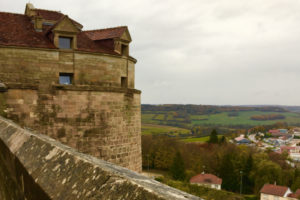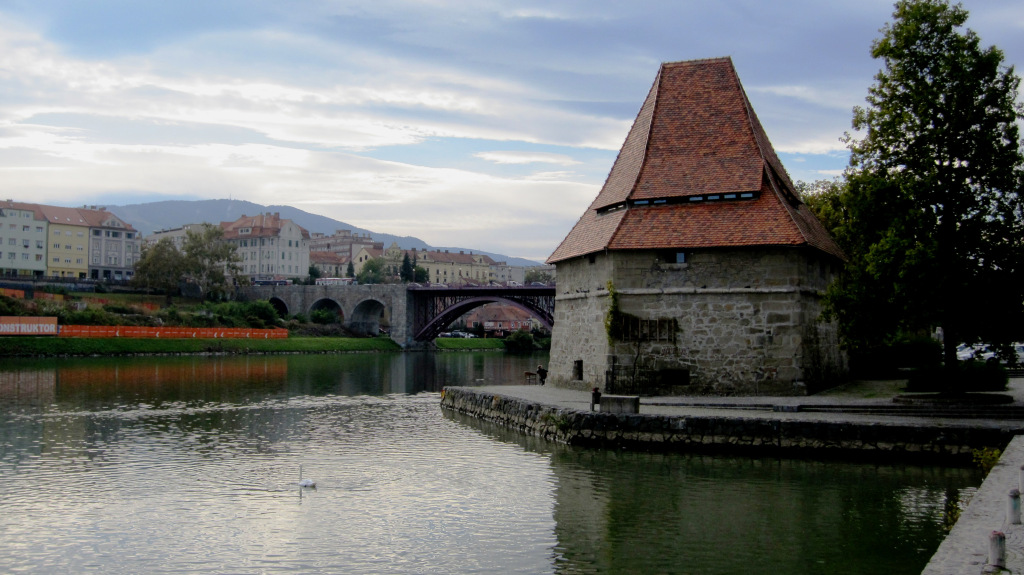
The world’s oldest living grapevine thrives in the city of Maribor in Slovenia, against the walls of a brick building at Vojašniška 8 – or 8 Military Street. It’s ironic that these grapes of fame that cause tipsiness sprout next to a street named after disciplined sobriety.
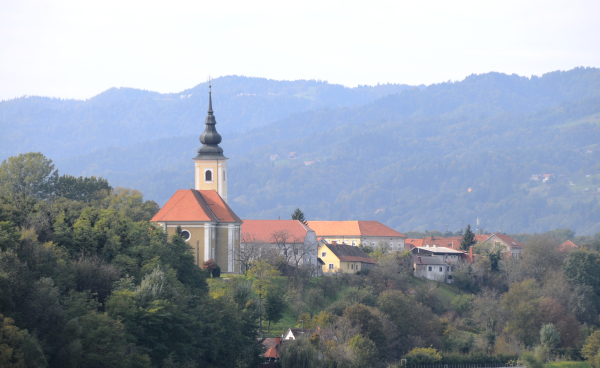



In the city of Maribor, I stepped into an information center to ask how to find this vine, famed by the Guinness Book of Records. A young woman told me to head a hundred feet up the road. She added that there was, “Not much to see. It’s just a vine.”
She was wrong. I stood near the River Drava and looked at the thigh-thick, gnarled vine erupting from soil and clinging to an even more ancient building. Its leaves and clustered grapes spread horizontally across a trellis fence running across the outer wall of the second story of the building. The whole assembly resembled a menorah, or multi-branched Jewish candelabrum.
Local Maribor residents, known as Mariborčani, call it the Old Vine. But it might as well be called the Big Vine because it’s one hefty chunk of tissue and gnarled bark. Pope John Paul II blessed it. Bill Clinton took a bottle of its wine home. Another bottle got sent to Arnold Schwarzenneger in California. Vine clippings from the Old Vine were transferred to be grown in Japan, Australia, Poland, Germany, and Spain, and now thrive in Switzerland, Austria, and Croatia.
Because it is such a respected symbol for Mirabor, Slovenia’s second largest city, each year a ten-day festival revolves around the Old Vine. There is also an annual appointment of a Vine Queen, who, a guide at the vine museum told me, “Must be younger than 25.” The woman who said that looked about 23, and spoke as though she were hoping for a run at next year’s appointment.
Each year at this festival, men wearing blue aprons climb up ladders to harvest grapes. The yield is about 100 pounds (45 kilograms). But the occasion is a massive party for celebrating Slovenia’s culture. Hundreds of people, many decked out in traditional costumes, flock to the river bank to rock to a band and watch the ritual cutting and pressing of grapes. The few gallons produced of this special wine are then put into artistic little glass flasks with twisted necks. The city mayor gives these as gifts to dignitaries, municipalities, and heads of state throughout the world.
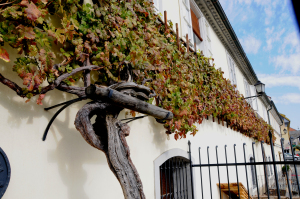
One of the men who harvests the grapes is Tone Zafošnik. If not for him and his vigilant pruning, this four century old grapevine might be dead. Zafošnik used to work as a researcher at the Llubljana Institute of Agriculture (Llubljana, pronounced LOOB-Lee-ana, is Slovenia’s capital). One day in 1980 he came to examine this ancient vine. Its antiquity had already been recognized from two paintings of the city made in the 1600s, both of which showed this characteristic vine sprouting against the same building. In 1972 an analysis of a core sample of its inner growth rings confirmed the age of the vine.
On the day Zafošnik arrived to look at this old growth, he began examining the 30 inch diameter vine when a group of gypsies – illegally squatting inside the building – scooted out and yelled at him to buzz off. A local policeman came to his the vintner’s rescue and made a deal with the gypsies: if they helped protect the vine, he would let them live inside the old building for the immediate future. Their enthusiasm, combined with a city decree to protect the vine, allowed Zafošnik to get to work.
Zafošnik began his effort to resuscitate the vine by cutting away all dead and dry parts. He followed this with years of radical, experienced pruning that left only two or three buds on new shoots. His care from above the earth’s surface telegraphed a message to the roots deep below. They soon woke up and began growing within the soil next to the River Drava.
Five years later, the Old Vine, or stara trta as the locals call it, produced enough grapes to make wine. Locally, wine grapes have grown in this region since the days of Celts and Romans. Documents dating back to 1091 show clear evidence of wine production then in Maribor. Yet in this country renowned for white wine, the Old Vine produces red grapes known as Modra Kavčina (or Žametna Čruina),which means, “Velvety black grape.” Traditionally, this vine grew on trellis work placed before house fronts.
The moody gypsies from the site have long gone. To illustrate respect for both the Old Vine and the building it shares a symbiotic relationship with, the city built a beautiful museum below the structure. A black path wends along the floor, symbolic of the River Drava, while a green mural slinks across the ceiling, representing the Old Vine. The well-lit museum includes a wine shop and wall photographs, including one from 1981 that shows the building being decrepit at the time vine restoration began.
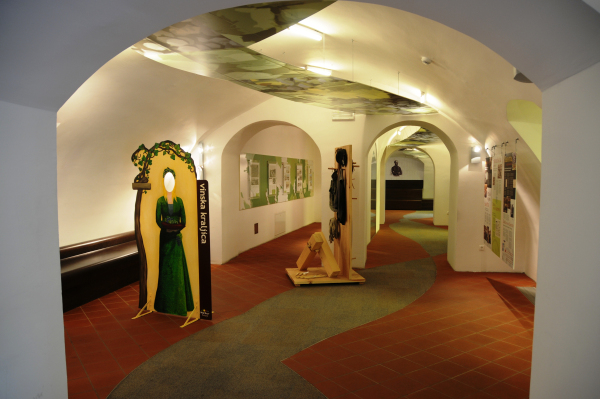
From the museum I walked along the nearby waterfront to a circular stone tower. This is the Vinoteka Maribor, or Water Tower wine bar. The bartender inside told me how defenders of the city built the structure in 1555 as part of a defensive wall against Ottoman attacks from the south.
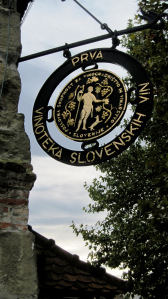
The interior was modern and attractive, but because the day was warm and beautiful I sat at an outdoor table on a flagstone porch. Pigeons fluttered above these stones while swans careened across the water. I watched the birds while sipping a glass of Benedict Red from Dveri-pax, a winery of the Benedictine monastery of Admont. The fellow who poured my wine explained, in flawless English, how monks there had produced wine for more than eight centuries. It tasted lush and wonderful and cost a pittance.
Though we never met, I thought about Tone Zafošnik. He apparently still tends the Old Vine with love and appreciation and does not ask for pay. He also laughs when friends joke that the vine is his mistress, considering the thousands of hours he has tended to her. He was just happy, he once told a reporter, to have saved the Old Vine.[i]
[i] Eddy, Kester ‘Ancient vine nursed back to life’ Financial Times, December 10, 2008 [online] http://www.ft.com/cms/s/0/2a68abd4-c65b-11dd-a741-000077b07658.html

